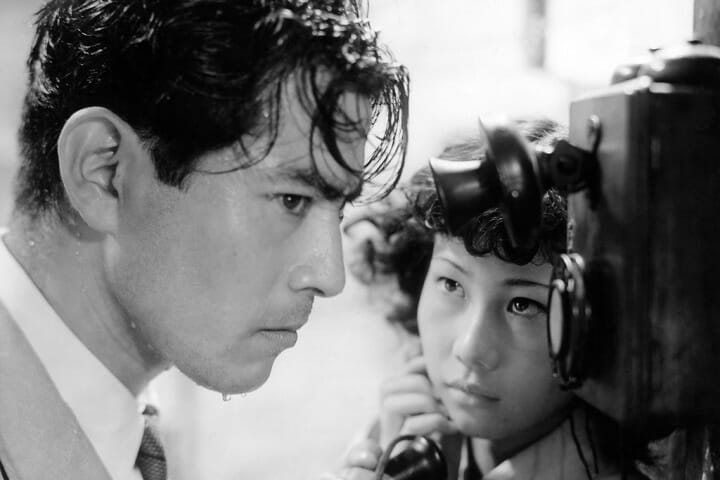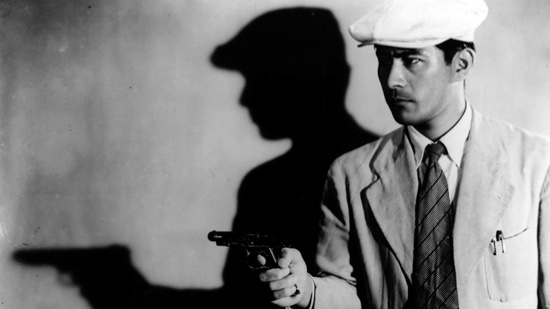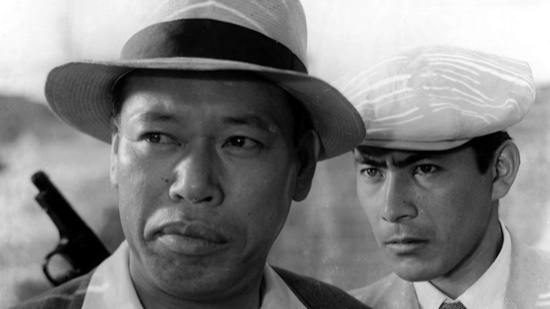In Stray Dog, One Gun Holds a Whole City Hostage
Kurosawa’s sweltering post-war noir tale turns 70.

Japan has bullying: 2017 was a banner year for it. It has domestic violence: Just months ago, several outlets cited it as a major issue that is becoming more widely reported. Contrary to what some very ignorant American lawmakers may think, its videogame production and consumption is a major segment of its economy, and one of its most high-profile cultural exports. If you think its movie violence is any tamer than that of U.S. films, there are Ryuhei Kitamura and Takashi Miike joints that I think you should see.
The land of the rising sun’s 127 million people are indeed just as prone as other humans to anger, depression and mental illness. What they are not prone to in any meaningful way is dying by firearm. The nation rarely sees gun deaths in the double digits in a given year—total, not per capita. Fewer people die from a bullet in the entire country than in one Dayton or Sandy Hook. More people are attacked by sharks in the United States in a given year.
Stray Dog, one of the films Akira Kurosawa wrote and directed during the American occupation of Japan, is about a lot of things: the vicissitudes of fate, the distrust and enmity sown by one bad deed, the overwhelming sprawl of urban life and how its anonymity gives cover to desperate crimes committed by desperate people. But it’s also about a gun: Japanese police did not carry them until 1946, when American authorities ordered them to. It’s that fact that looms unspoken over this seething film noir that came out just a year after The Naked City.

Murakami (Toshiro Mifune) is a young detective who, like his fellow city-dwellers, is withering under a heat wave that isn’t leaving a single brow dry. In the scrum of public transit, he realizes that his Colt has gone missing, the presumed thief fleeing before he can catch him or even make an ID. Murakami is in such deep shit that he’s certain he’ll be fired before his career has properly begun, but he’s reassured by the cool veteran detective Sato (Takashi Shimura, the character actor who would work alongside Mifune and Kurosawa in classic after classic).
The early stretches of the movie dive into full-on procedural mode, as the rookie cop learns the ins and outs of the illegal gun trade from the weathered old gumshoe. They reconstruct the scene, consult the department’s rogues’ gallery, and embark on a tour of the underworld as they labor in the wake of the stolen gun. Through it all, Kurosawa never lets you forget that it is sweltering outside, and it’s debilitating the people caught in it. Murakami pours sweat. Few indoor scenes haven’t got a fan somewhere in the background (or in one churlish manager’s own two hands, aimed straight up at his glowering face as he rebuffs Murakami’s questions).
At first it looks like the movie will be one young man’s look at how the other half lives, as he persistently tails one female pickpocket who’s upgraded from kimonos to a dress, and wanders around the crowded urban sprawl in plainclothes for an extended sequence, hoping that he can look desperate and mean enough to be approached by somebody trying to sell him an illegal weapon. It’s a work with all the hallmarks of a gritty film noir produced in the West: The tortured detective back from the war, the buddy cop dynamic, the scene where the kindly old pro invites the driven youngster into his humble home for drinks and straight talk about what’s really important in life for a cop.
But the back half becomes a tense thriller as Murakami discovers that the gun has made it into the hands of a buyer, and he’s wreaking havoc with the handful of bullets that came with it.

